Early Phrygian Inscriptions from Gordion
Until the beginning of the 1950s, Gordion had only produced three Early Phrygian (YHSS 6 period) inscriptions (G-101 to G-103), found during the German excavations of the Körte brothers (1900), and one of these had been misidentified as Greek. Beginning in 1950, however, the American excavations directed by Rodney S. Young demonstrated the exceptional epigraphic richness of the site. After several preliminary notes on inscriptions in the excavation reports (notably in American Journal of Archaeology), Young provided a general survey in a 1969 Hesperia article.
All of the inscriptions discovered up to the present have been published by C. Brixhe and M. Lejeune. With 11 inscriptions on stone and 245 graffiti, primarily on vases, Gordion is still by far the richest site for Early Phrygian epigraphy.
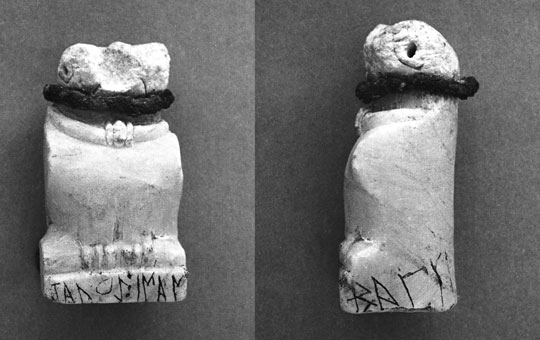
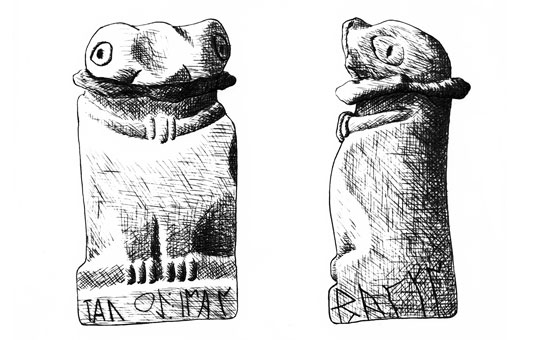
Inscription G-136
An alabaster falcon with the inscription tadoy iman bag(?)un: a dedication with tadoy in the dative indicating the recipient and iman the dedicant?
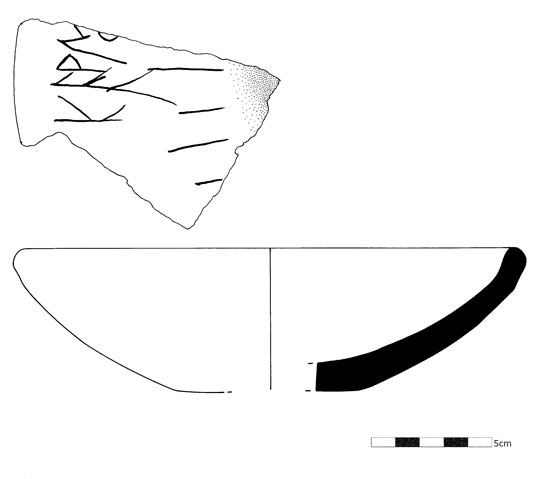

Inscription G-104
One of the earliest Phrygian documents, dating to the end of the ninth or early eighth century BCE. Only at Gordion can one observe the entire chronological development of Early Phrygian epigraphy. The practice came to an end probably in the fourth century BCE with the arrival of the army of Alexander. But above all, it is the beginnings that are noteworthy; they are, without doubt, of considerable significance for the history of the alphabet.
The Phrygian alphabet resembles one of the Archaic Greek alphabets and actually appears to have been derived from Greek. However, if one follows the recent redating adopted for the destruction of Early Phrygian Gordion, the oldest graffiti from the site (G-104, G-237 and G-249) can be assigned to the end of the ninth/early eighth century BCE: if one sets aside the five letters of a graffito found in a tomb in Latium (of uncertain language and date—possibly the first quarter of the eighth century?—see Bulletin Epigraphique 1997, 715 and 1998, 602), the graffiti from Gordion precede the oldest Greek inscriptions by more than a half-century.
This observation ties into the problem of the identity of the first adaptors of the Phoenician alphabet to an Indo-European language. The historical link between the Greek and Phrygian alphabets is assured by the rectilinear form of the iota (I), among other evidence. Should we then reverse the current opinion and make the Greek alphabet dependent on the Phrygian? This is not necessary. But several indications permit us to suggest a Phrygian contribution to this adaptation in two or three respects.
Furthermore, the three graffiti from Gordion mentioned above demonstrate that at the end of the ninth/beginning of the eighth century BCE, the Greco-Phrygian alphabet was, structurally and formally, completely free from its Semitic model, and that it had already had a long history. This prompts us to place the borrowing and adaptation of the script significantly earlier (beginning of the ninth century BCE, if not the tenth). With respect to all of these issues, see Brixhe 2004.
Inscription G-02
The inscriptions on stone are written from left to right or in boustrophedon (lines alternating from one side to the other, without interruption). Among the graffiti where the direction is identifiable with certainty, two-thirds are written from left to right, and one-third from right to left. With the exception of G-02, all the stones are fragmentary.
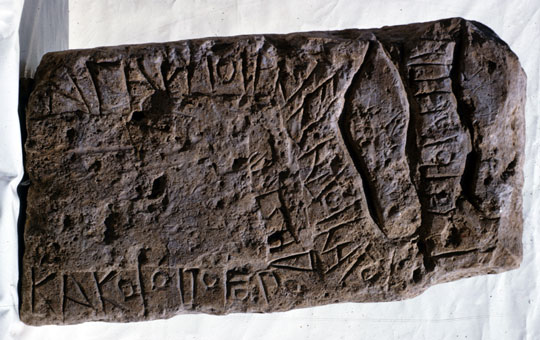
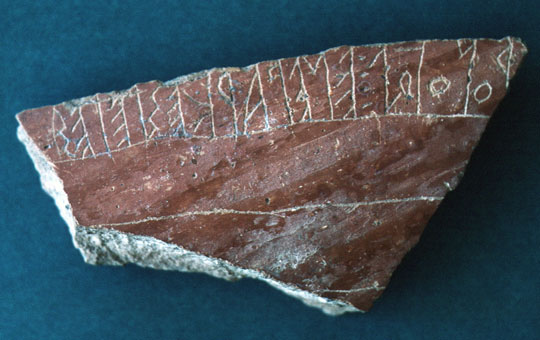
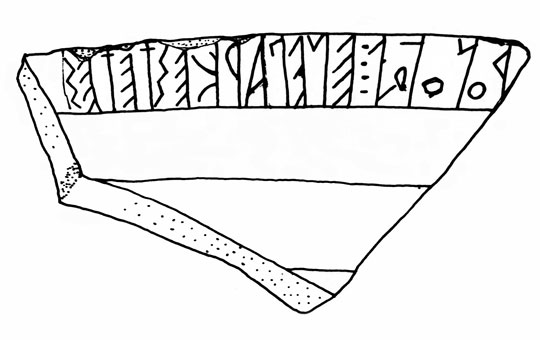
Inscription G-125
Graffito on a vessel, where one can read the verb eneparkes (= Latin scripsit ‘wrote this’?).
Certain graffiti seem to present words or compounds with a verb (as G-125) or without (as G-136, above). The graffiti constitute, as we have seen, the majority of the evidence, but they are often damaged (due to the friability of the surface), and even when complete, they are almost always very short, consisting of a personal name, no doubt that of the owner. Nevertheless, this group of inscriptions makes an important contribution to our understanding of Phrygian, a language that is still in the process of decipherment. One can get a sense of this from the examples illustrated above. When our understanding of the meaning of these documents is more secure, this contribution will be even more valuable.
Inscription G-286
Graffito with the name Voines.
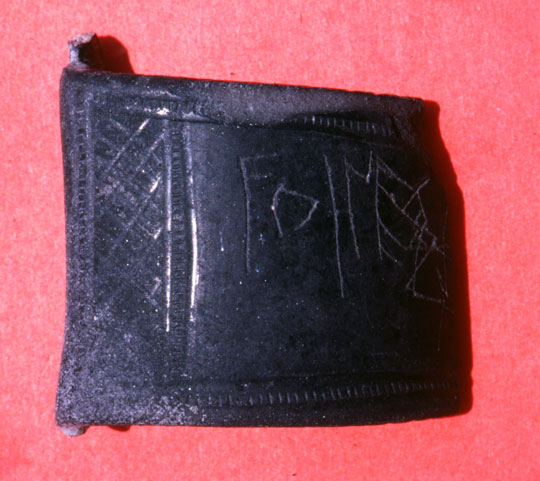
Due to the abundance of personal names, the epigraphy of Gordion furnishes an excellent overview of Phrygian onomastics. Not unexpectedly, one encounters many names which appear to be Phrygian such as Benagonos (G-116), Agipeia (G-135), Voine(s) (G-129, G-228, G-286; see also the derived form Voineios G-145) or Daguvas (G-293).
But these are not the most common. In fact, like all the people of ancient Anatolia, from the Hittite to the Greco-Roman periods, the Phrygians had a penchant for familiar forms such as Ata, Baba, Nana, Nina, etc.
Inscription G-229
Graffito consisting of two rhyming formulas beginning with the personal name Mamutas.
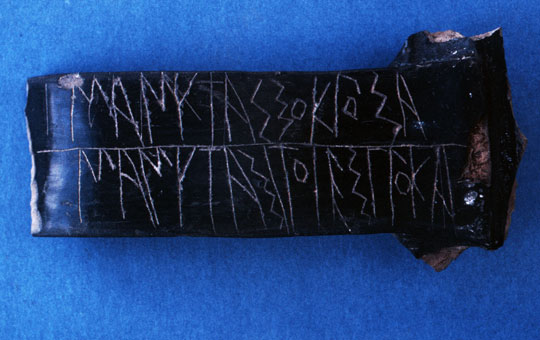
In a place like Gordion that was under Hittite control or influence in the second millennium BCE, it is not surprising to find some Hittite-Luwian names such as Mamutas.
One notes that the name Midas was not particular to the royal family, since it is found on a common domestic vessel (G-137).
Inscription G-183
A compound onomastic formula? The onomastic formula is generally limited to the name of the individual. In certain cases, it may consist of a compound; in G-183, the forms Imeneia and Tiveia, diametrically opposed on the foot of a cup, may signify “X, son or daughter of Y,” the relationship of the parent being expressed by a derived adjective; with regard to the referent, however, we cannot determine which is the parent and which is the child.
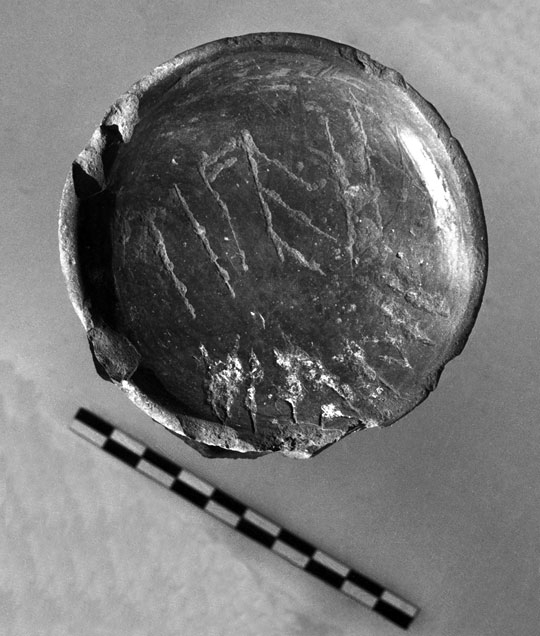
Further reading
- Brixhe, C. – M. Lejeune. 1984. Corpus des inscriptions paléo-phrygiennes, Paris.
- Roller, L. 1987. Gordion Special Studies, Volume I: Nonverbal Graffiti, Dipinti, and Stamps, Philadelphia.
- Roller, L. 1989. “The Art of Writing at Gordion,” Expedition 31.1, pp. 54-61.

